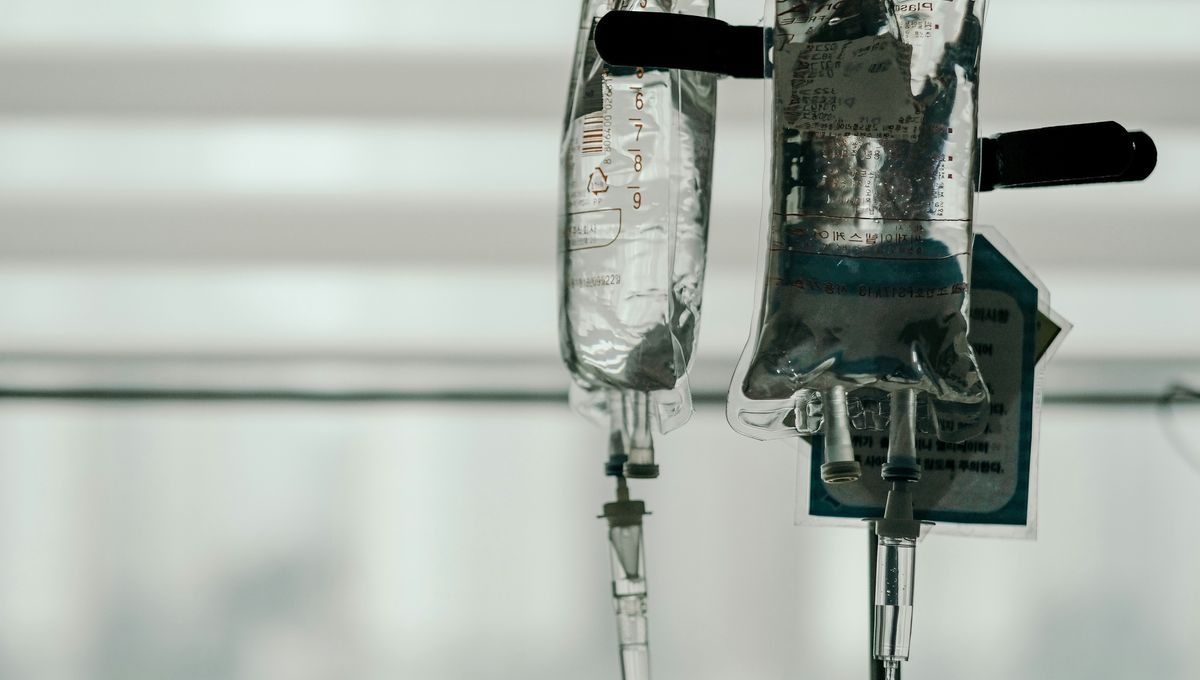
Microplastics get everywhere, and there’s increasing attention being paid to their potential effects on human health. It’s not exactly great news, then, that a new study suggests microplastics found in medical infusion bags may be getting pumped directly into our bloodstreams.
ADVERTISEMENT
It seems that wherever you look, you can find microplastics. Humanity’s decades-long love affair with the material has certainly left its mark on the planet. From Earth’s oceans and lakes to the water we drink and food we eat, we’re being exposed to this stuff all the time. Evidence of micro- and nanoplastics has been found in multiple human organs, and scientists are really only beginning to grapple with the possible health consequences.
And now there’s something new to, perhaps not worry about yet, but at least think about. You can filter your drinking water and do your best to limit your own personal use of plastic – and even that can only take you so far – but the latest identified source of microplastics will be a lot harder to avoid if you ever require medical treatment. It’s the bags that hold the fluids and drugs used for intravenous (IV) infusions.
Research from way back in the 1970s suggested that IV bags could potentially contain solid particles, but there was little follow-up to figure out what these might be. The team behind the new study suspected they could be microplastics, and that the act of receiving an infusion could send those particles hurtling directly into the human bloodstream.
They looked at two different brands of IV saline solution, commonly used during the treatment of many diseases and conditions for rehydration. They emptied the bags into individual containers, then filtered the liquid to separate out any microscopic particles. Samples were counted to estimate the total number of particles in each bag, and their composition was analyzed.
Both brands of saline were found to contain tiny particles of polypropylene, which is unsurprising as this is what the bags themselves are made of. This suggests that the material can slough off the surface of the bag and into the liquid within. The authors think that this is made more likely by exposure to UV light and heat, so they recommend these bags be stored carefully to minimize this.
In terms of the level of exposure we could be talking about here, the team estimated that each bag could transfer about 7,500 particles into the recipient’s bloodstream. Certain treatments require multiple IVs to be administered, so this could start to build up quite rapidly.
ADVERTISEMENT
It’s important to note here that we’re still far from a scientific consensus around what microplastics are actually doing to our bodies and how harmful they may be. There have been no clinical studies directly investigating this – all we know is that we can find evidence of microplastic accumulation from our environment in lots of bodily tissues.
The concern here, according to the authors, is that IVs could be providing a direct line for microplastics to pass into the blood, thus providing easier access to distant areas of the body, which could be problematic if microplastics are proven to cause harm. They suggest that a potential mitigation could be a filtering step before the fluid actually gets pushed into the body.
“In summary, our findings highlight an aspect of plastic pollution that affects humans most directly, as [microplastics] are being injected into the bloodstream. This pathway was identified years before the landmark report on the effects of plastic pollution on marine life; yet, it has received much less attention,” they write.
Attention is certainly being paid to microplastics now; but as several experts have warned recently, there’s still a way to go before we understand for sure whether, and how, they could be damaging our health.
ADVERTISEMENT
The study is published in the journal Environment & Health.
Source Link: IV Bags Could Be Pumping Microplastics Straight Into The Bloodstream, Scientists Suggest